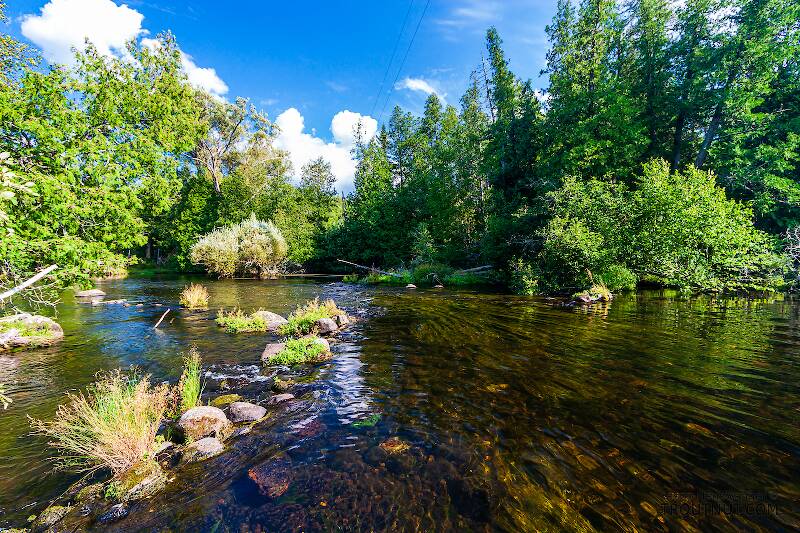
Hex Mayflies
Hexagenia limbata
The famous nocturnal Hex hatch of the Midwest (and a few other lucky locations) stirs to the surface mythically large brown trout that only touch streamers for the rest of the year.
Featured on the forum

This one seems to tentatively key to Holocentropus, although I can't make out the anal spines in Couplet 7 of the Key to Genera of Polycentropodidae Larvae nor the dark bands in Couplet 4 of the Key to Genera of Polycentropodidae Larvae, making me wonder if I went wrong somewhere in keying it out. I don't see where that could have happened, though. It might also be that it's a very immature larva and doesn't possess all the identifying characteristics in the key yet. If Holocentropus is correct, then Holocentropus flavus and Holocentropus interruptus are the two likely possibilities based on range, but I was not able to find a description of their larvae.

Troutnut is a project started in 2003 by salmonid ecologist Jason "Troutnut" Neuswanger to help anglers and
fly tyers unabashedly embrace the entomological side of the sport. Learn more about Troutnut or
support the project for an enhanced experience here.
Arthropod Order Mysida (Mysis Shrimp)
Mysis shrimp also commonly known as opossum shrimp for the way they carry their broods, can be important to anglers as a curious bi-product of fisheries management practices. Fish and Game departments looking for a way to supplement the diets of planted kokanee salmon introduced these species from the Far North decades ago into many of the newly formed reservoirs. While not providing angling opportunities in the impoundments, they are often trapped in the dam's turbines and flushed down the tailwaters by the millions to feed the waiting trout. Their stunned or dead state makes them easy pickings. When these events occur the fish will really focus on them.
Mysida are not true shrimp and their appearance is unique. The species most commonly planted are virtually crystal clear transparant and they are more nymph shaped than shrimp shaped. Their legs are toward the front and they have a carapace that covers the head and thoracic segments. They also have appendages off the last abdominal segment that could be mistaken for tails. They have dark compound eyes.
Mysida are not true shrimp and their appearance is unique. The species most commonly planted are virtually crystal clear transparant and they are more nymph shaped than shrimp shaped. Their legs are toward the front and they have a carapace that covers the head and thoracic segments. They also have appendages off the last abdominal segment that could be mistaken for tails. They have dark compound eyes.

